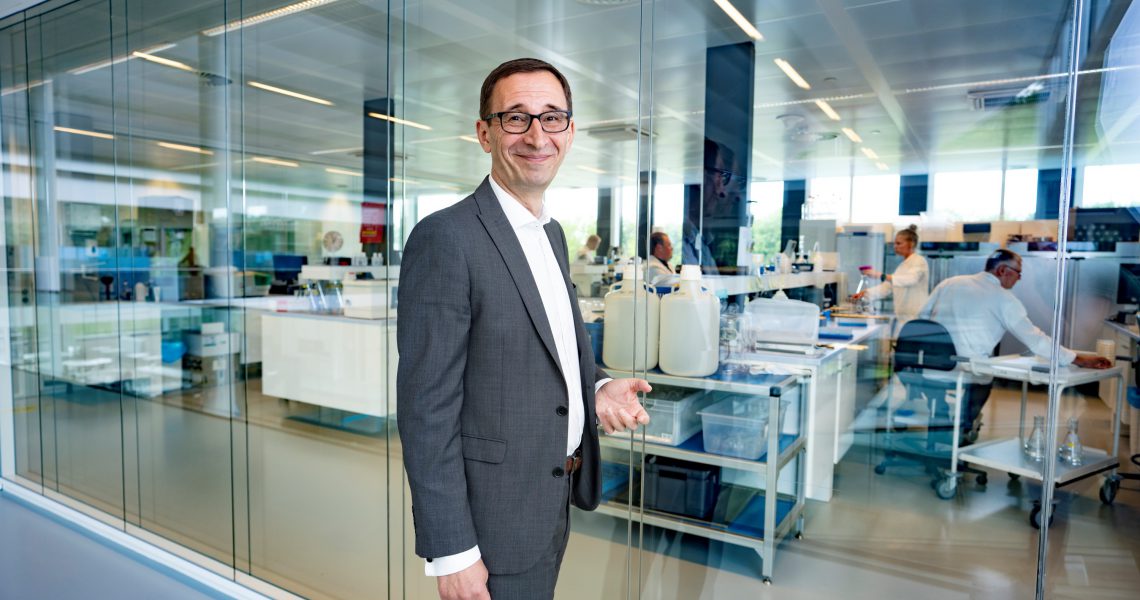The circular economy aims to eliminate waste and pollution, circulate products and materials, and regenerate nature. Most discussions about circularity revolve around material goods – but what about water?
Water is by nature cyclical: it flows, freezes, evaporates, and infiltrates across the planet – but it is never lost. However, in human-built systems, water tends to flow in one end and out the other in a linear fashion. Therefore water circularity in the built environment is about reducing or eliminating wastewater discharge, maintaining a continuous cycle of use and reuse.
To find out more, we caught up with Professor Dragan Savić, the CEO of KWR Water Research Institute and Professor of Hydroinformatics at the University of Exeter. Based in the Netherlands, KWR is one of the world’s leading applied scientific research centres focusing on the water cycle.
Professor Savić is an international expert in smart water systems with over 35 years of experience working in engineering, academia, and research consultancy.
What do you understand by the term ‘circularity’ and how does it apply to water management?
Savić: For me, ‘circularity’ is a synonym for doing things as nature does it, or in other words, continuously reusing all material in perpetuity.
Using nature as a model is in opposition to our dominant ‘linear’ economic system, where after we make a product and it comes to the end of its useful life, it becomes waste and damages our environment and climate.
The same principle of circularity should apply to water and water management so that we don’t have to deal with ‘wastewater’ but find new ways to extract material and energy during the water recycling process.
What are some of the benefits of this approach?
Savić: The benefits are numerous, but the main ones are related to the reduced use of non-renewable resources (e.g., oil, coal and metal ores) and lower carbon emissions.
Water reuse also helps to realise a zero-waste future and brings further benefits to the economy through business and job creation related to the circular economy products and services. All in all, it’s a win-win situation.
How does water relate to other key sectors like manufacturing, mining and agriculture?
Savić: Water is critical to all industries. A lot of water is required to manufacture products (e.g., a pair of jeans requires over 7,000 litres of water to make it through the production line) and for mining operations, which sometimes impact on water quality. Agriculture is the largest user of water globally with farmers in most countries not paying for the full cost of the water they use.
Therefore, water in the circular economy is closely related to other crucial economic activities and should be considered as part of a much larger system of systems.
Have cities adopted policies on water circularity yet? If so, what are some of the challenges and opportunities to implementation?
Savić: I’m always an optimist and am encouraged by the drive and leadership of many cities that are turning to a circular economy to ensure city resilience and long-term sustainability.
However, the danger is that if we do not look at the challenge holistically we may end up doing more harm to the environment and economy.
For example, if we focus only on one system, say materials recycling, we can end up polluting more water or emitting more CO2. Similarly, if we focus on one sector only, such as transport or energy systems, we can end up with unintended consequences. An example is the first generation of biofuels where the main impacts were water overconsumption and pollution.
What is the role of technology?
Savić: We already have an array of effective technologies for reducing, recycling and re-using materials. However, I’d like to emphasise the role of digital technologies and data, which are essential for understanding the current level of circularity, following and measuring the progress and identifying bottlenecks on the way to a full circularity situation.
What is the role of governance?
Savić: While we have good technologies to support the creation of a circular economy, we lack the governance structures to identify priorities, synergies, engage people, provide supporting infrastructure, legislation, incentives, funding, and more. In other words, people are the key to the transition to a circular economy.
Can you explain a bit more about KWR’s Water in the Circular Economy Programme?
Savić: KWR participates in various Horizon 2020, Horizon Europe Project and ERC projects (Water Futures) on an international level. We provide expertise on water technology, serious gaming, stakeholder engagement and Community of Practice (CoP), amongst others.
In the Netherlands, KWR coordinates WiCE (Water in the Circular Economy), a joint research programme involving drinking water utilities in the Netherlands and Flanders, focusing on how the water sector can transition to circularity. The programme has the ultimate goal of enabling utilities to contribute to climate protection and sustainability.
Utilities provide water for domestic, industrial and commercial use and connect various sectors and therefore cannot work in isolation. The aim is to collaborate across sectors to help countries like the Netherlands fully embrace the circular economy by 2050.
Do you have an article or video that you would like to contribute? Submit your contribution here or keep up with the latest news from the water industry and wastewater industry by subscribing to our weekly newsletter







